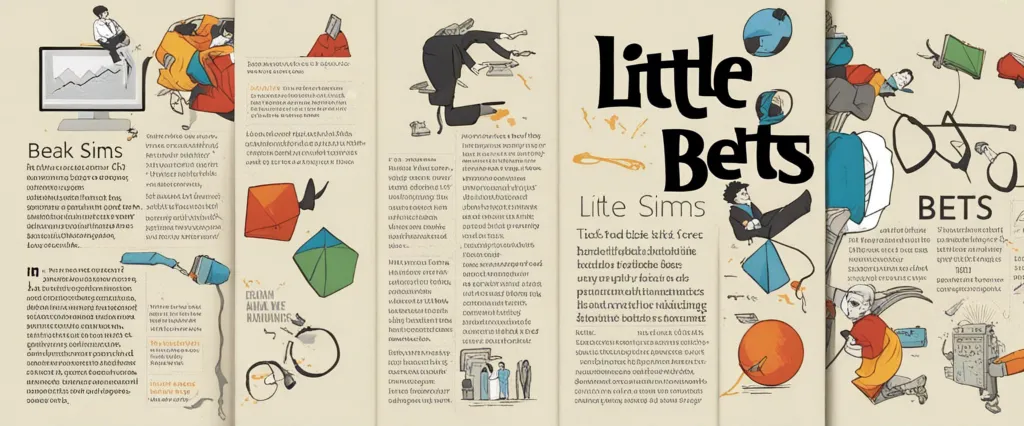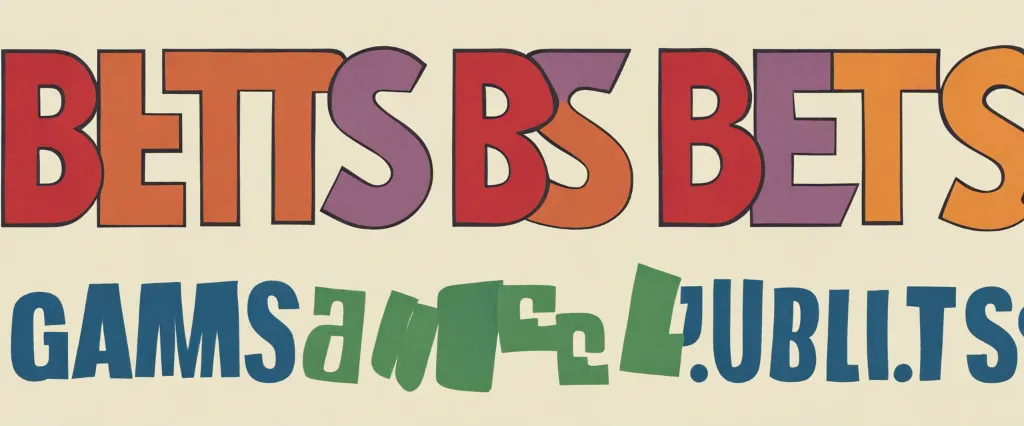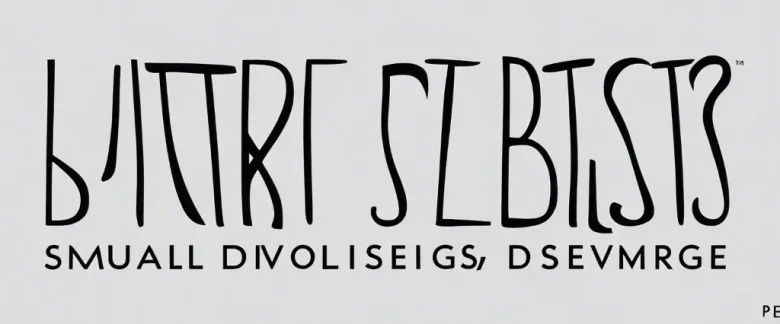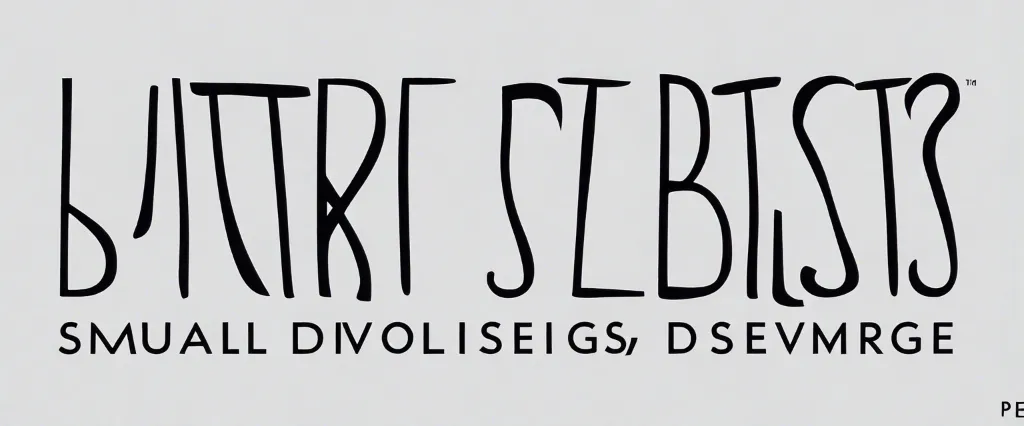In his groundbreaking book “Little Bets,” Peter Sims explores an innovative approach to creativity and problem-solving. Sims, a renowned entrepreneur, educator, and writer, draws upon his extensive research and interviews with leading professionals across various fields to unveil a powerful strategy that can transform how we think and act towards achieving success. By introducing the concept of “little bets,” Sims elucidates how making small, experimental steps allows individuals to navigate the uncertainties of complex challenges, ultimately leading to extraordinary breakthroughs.
Chapter 1: The Power of Little Bets
Chapter 1 of the book “Little Bets” by Peter Sims introduces the concept of little bets as a way to approach goals, explore possibilities, and innovate. Sims argues that small, experimental actions can lead to significant accomplishments and breakthroughs in various fields.
In this chapter, Sims presents several case studies of successful individuals and companies who have embraced the little bets mindset. He begins with the story of Chris Rock, the renowned comedian, who consistently tests his jokes in small clubs before delivering them in major arenas. Rock’s approach allows him to refine his material based on immediate audience feedback and ensures his success on bigger stages.
Sims also examines the creative process of architect Frank Gehry, known for his unconventional designs. Gehry starts with small-scale models that he continually adjusts and evolves, enabling him to experiment and learn from each iteration. By making little bets with physical models, he avoids costly mistakes and creates stunning architectural wonders.
Furthermore, Sims reveals how innovative companies, like Pixar and Amazon, adopt a similar approach. Pixar encourages its animators to produce short films to test new techniques and storytelling methods. Similarly, Amazon regularly introduces small changes to its website to gauge customer responses and refine their user experience.
The core message of this chapter is that little bets foster creativity, learning, and adaptation, ultimately leading to significant achievements. Sims emphasizes that taking small risks and learning from failures is essential in generating breakthrough ideas and overcoming obstacles. By embracing a mindset of experimentation and embracing failure as a learning opportunity, individuals and organizations can continually improve and reach their goals.
Chapter 2: Exploration and Experimentation
Chapter 2 of “Little Bets” by Peter Sims is titled “Exploration and Experimentation” and delves into the importance of actively exploring and experimenting to fuel the process of innovation and creativity.
Sims begins by reciting the famous story of Thomas Edison and his relentless pursuit of creating the incandescent light bulb. Through numerous trials and failures, Edison exemplified the power of exploration and experimentation. The chapter emphasizes that creative breakthroughs rarely happen by accident but require a deliberate exploration process.
The author introduces the concept of “little bets,” which refers to small, low-risk experiments that allow individuals to gather feedback, learn, and iterate on their ideas. Sims argues that these little bets are the building blocks of innovation. He provides examples of successful companies like Pixar and Amazon, which have thrived by embracing experimentation in their respective industries.
Sims further explores the importance of what he calls the “experimental mindset.” This mindset involves reframing failure as valuable feedback and embracing a mindset of curiosity and learning. He highlights the significance of creating a culture that encourages experimentation and supports individuals to take calculated risks.
Throughout the chapter, Sims shares various real-life stories of creative individuals, entrepreneurs, and companies who have utilized exploration and experimentation to drive their success. These stories illustrate how a willingness to take small risks and learn from failures can lead to groundbreaking innovations.
In essence, Chapter 2 of “Little Bets” emphasizes the crucial role of exploration and experimentation in the process of innovation. By taking small, calculated risks, learning from failures, and maintaining an experimental mindset, individuals and organizations can unlock their creative potential and achieve significant breakthroughs.
Chapter 3: Learning from Failure
Chapter 3 of the book “Little Bets” by Peter Sims explores the importance of embracing failure as a learning opportunity. Sims discusses how successful individuals and organizations view failures as valuable stepping stones on the path to innovation and growth.
The chapter begins by highlighting the error-avoidance mindset that plagues many individuals. Society often discourages failure, stigmatizing it as a negative outcome. However, Sims argues that adopting a mindset that accepts and learns from failure can open the door to immense creativity and success.
Sims introduces the concept of “learning by doing,” where individuals take small, experimental actions, or “little bets,” to test their ideas. By taking calculated risks and embracing the uncertainty of outcomes, people can gather valuable information and improve their ideas over time. He provides numerous examples of renowned individuals, such as Thomas Edison, who developed groundbreaking inventions by persevering through failures. Edison famously said, “I have not failed. I’ve just found 10,000 ways that won’t work.”
The author also emphasizes the need for organizations to create an environment that encourages experimentation and embraces failure. Companies like Google and Pixar actively promote a culture of learning from mistakes, allowing their employees to take calculated risks and explore unconventional ideas. Sims argues that such environments foster innovation and lead to breakthrough successes.
Additionally, the chapter stresses the importance of reflection and iteration. Instead of dwelling on a failure, one should analyze what went wrong, learn from it, and apply the insights to future endeavors. This iterative process is crucial for growth and improvement.
Overall, Chapter 3 of “Little Bets” highlights the transformative power of failure. By shifting our mindset, embracing failure as an opportunity for learning, and cultivating a culture of experimentation, individuals and organizations can unlock their full potential and achieve remarkable success.
Chapter 4: Cultivating Creativity

Chapter 4 of the book “Little Bets” by Peter Sims explores the mindset and practices necessary for nurturing creativity in individuals and organizations. The chapter emphasizes the importance of experimentation, learning from failure, and embracing ambiguity as ways to foster creative thinking.
Sims begins by highlighting the concept of “creative confidence” coined by Tom Kelley, which refers to the belief in one’s ability to generate creative ideas and implement them successfully. He argues that creative confidence can be developed through a willingness to take risks, maintaining a growth mindset, and engaging in iterative processes of learning and improving.
The author introduces the power of small wins and the idea of cultivating creativity through “little bets.” These are low-risk, focused experiments aimed at testing new ideas and gaining valuable insights. Sims emphasizes that these small bets are not only valuable for creative individuals, but also for organizations seeking innovative solutions. By breaking down big ideas into manageable parts, little bets allow for flexibility and adaptation, while mitigating the fear of failure.
Sims emphasizes the role of perseverance and resilience in creativity. He highlights the stories of successful individuals who faced multiple failures before achieving breakthroughs, such as Steve Jobs and Thomas Edison. The chapter emphasizes the importance of embracing failure as an opportunity for growth, learning, and the generation of new ideas.
To foster creativity, the chapter also discusses the significance of creating an environment that encourages collaboration, diversity of perspectives, and open dialogue. Sims emphasizes the importance of overcoming biases, embracing uncertainty, and creating a safe space for experimentation and creative expression.
In summary, Chapter 4 of “Little Bets” emphasizes the cultivation of creative confidence through experimentation, learning from failure, and embracing ambiguity. Sims advocates for the power of small wins and highlights the role of perseverance and resilience in the creative process. Additionally, the chapter stresses the importance of creating an environment that fosters collaboration and encourages diverse perspectives in order to enhance creativity.
Chapter 5: Collaboration
Chapter 5 of “Little Bets” by Peter Sims delves into the importance of collaboration in the creative process and how it can lead to breakthrough innovations. Sims highlights that collaboration not only enhances the quality of ideas but also boosts the speed of learning and iteration.
The chapter begins by emphasizing the power of diverse perspectives and the role they play in shaping creative outcomes. Sims mentions that when individuals with different backgrounds, skills, and viewpoints collaborate, they bring unique insights that can lead to more innovative and original ideas. He presents examples from Pixar, where teams of artists, writers, and animators work together to refine ideas and produce exceptional animated films.
Sims also explores the concept of collective intelligence, explaining how groups can collectively solve complex problems that individuals struggle with independently. He shares the story of a group of computer scientists who participated in a “Red Balloon Challenge” organized by DARPA, where they successfully used networks and collaboration to locate ten red balloons scattered across the United States within a single day.
Additionally, the chapter emphasizes the importance of fostering an environment that encourages open and honest communication within teams. Sims suggests that creating a psychologically safe space where individuals can express their ideas freely leads to better collaboration and more fruitful discussions. He refers to psychologist Amy Edmondson’s work on psychological safety and highlights its role in effective team dynamics.
Sims further discusses the process of collaboration within the renowned design firm IDEO, where the practice of “design thinking” involves iterative collaboration and continuous feedback from diverse team members. This approach allows for rapid prototyping and testing, leading to innovative solutions.
Overall, Chapter 5 emphasizes the significant role collaboration plays in fostering creativity and breakthrough innovation. By harnessing the power of diverse perspectives and creating an environment conducive to open and honest collaboration, individuals and teams can generate more innovative ideas and achieve remarkable results.
Chapter 6: Iteration and Improvement
Chapter 6 of “Little Bets” by Peter Sims is titled “Iteration and Improvement.” In this chapter, Sims explores the importance of iteration and continuous improvement in the creative process.
The chapter begins by emphasizing the significance of gathering feedback and learning from failures. Sims explains that in order to develop breakthrough ideas, one must be willing to take risks, make mistakes, and extract lessons from them. He highlights the story of Pixar Animation Studios, where their success was primarily driven by their willingness to iterate and refine their work continually. Pixar understood that failure was a natural part of the creative process and approached it as an opportunity to learn and improve.
Sims then delves into the concept of prototyping and how it can be a powerful tool for iteration. He shares examples from various industries, like architecture and engineering, to illustrate how prototypes serve as a tangible model for testing ideas and making incremental improvements. Sims emphasizes the importance of embracing the “fail early, fail often” mentality, as it allows for faster learning and adaptation.
Additionally, the chapter discusses the concept of incremental progress. Sims explains that breakthrough ideas often arise from a series of small improvements over time, as opposed to one grand revelation. By breaking down innovative projects into small, manageable steps, individuals can continuously iterate and make progress. Sims references the examples of Facebook and Amazon, illustrating how their legendary success was built upon countless small improvements and iterations.
In conclusion, Chapter 6 underscores the importance of iteration and improvement in the creative process. Sims encourages individuals to embrace failure, gather feedback, and make continuous refinements to their ideas. By adopting a mindset of constant improvement, we can unlock our creative potential and achieve meaningful breakthroughs.
Chapter 7: From Little Bets to Big Wins
Chapter 7: From Little Bets to Big Wins of the book “Little Bets” by Peter Sims discusses the importance of taking small, manageable risks in order to achieve significant accomplishments. Sims emphasizes that successful individuals and organizations often achieve their goals through a series of iterative and experimental steps.
The chapter begins by highlighting the concept of a “big win” – a significant achievement or breakthrough that delivers substantial value. Sims argues that big wins are rarely the result of a grand, preconceived plan, but rather a series of small experiments that gradually build towards success.
To illustrate this point, Sims uses examples from various fields, such as the invention of the printing press by Johannes Gutenberg and the creation of Pixar Animation Studios. Both examples demonstrate how individuals pursued their goals by making little bets – small, low-risk experiments – which eventually led to their revolutionary achievements.
Sims also explores the role of failure in the process of making little bets. He emphasizes that failure should not be feared but rather embraced as a valuable source of learning and growth. By making small bets, individuals and organizations can quickly adapt and iterate their ideas based on feedback and lessons learned from failures.
The chapter concludes by providing practical advice for implementing the little bets approach. Sims encourages the cultivation of an experimental mindset and the creation of a safe environment for taking risks. He suggests seeking feedback from others, prototyping ideas, and making incremental progress as crucial steps toward achieving big wins.
In summary, Chapter 7 of “Little Bets” emphasizes the power of making small, low-risk experiments as a pathway to achieving significant accomplishments. By embracing failure and adopting an experimental mindset, individuals and organizations can navigate a series of iterative steps that ultimately lead to big wins.

Chapter 8: Sustaining Innovation
Chapter 8 of “Little Bets” by Peter Sims explores the concept of sustaining innovation, focusing on the ability of successful entrepreneurs and companies to constantly adapt and evolve in order to stay ahead in a dynamic market.
The chapter begins with the author highlighting how small bets can help fuel continual innovation. By making small, low-risk experiments, entrepreneurs are able to test and iterate on ideas, constantly seeking new ways to improve their products and services. Sims emphasizes the importance of embracing failure as a learning opportunity, as it can provide valuable insights and lead to unexpected breakthroughs.
Sustaining innovation requires actively seeking feedback from customers and engaging in a continuous dialogue to understand their evolving needs and preferences. Sims interviews several successful entrepreneurs who emphasize the importance of keeping an open mind and being receptive to market feedback. This approach allows entrepreneurs to pivot and make necessary adjustments, staying relevant in a competitive industry.
Additionally, the chapter explores the concept of perpetual beta, where entrepreneurs never consider their product as fully completed but rather as an evolving work-in-progress. This mindset encourages constant experimentation, enabling entrepreneurs to adapt to changing market demands and make necessary improvements.
Sims also stresses the significance of collaboration and building strong networks. Entrepreneurs can leverage the expertise and insights of others to enhance their own innovative processes. Collaboration can unlock new possibilities, spark creativity, and open doors to new markets.
In summary, Chapter 8 of “Little Bets” highlights the crucial role of sustaining innovation in entrepreneurial success. By embracing small bets, continually seeking feedback, maintaining an open mindset, and fostering collaboration, entrepreneurs can adapt to market dynamics and drive ongoing innovation in their ventures.
After Reading
In conclusion, “Little Bets” by Peter Sims explores the power of experimenting and taking small, calculated risks to achieve great results. Sims highlights the success stories of creative individuals and organizations who have embraced the mindset of making small bets rather than relying on grand plans. Through anecdotes and research, he demonstrates how these small, experimental approaches can lead to major breakthroughs, innovation, and personal growth. The book serves as a compelling guide for anyone seeking to unleash their creative potential and succeed in an uncertain and constantly evolving world.
1. The Lean Startup: How Today’s Entrepreneurs Use Continuous Innovation to Create Radically Successful Businesses” by Eric Ries – Similar to “Little Bets,” this book explores a methodology that encourages entrepreneurs to take calculated risks, iterate, and pivot based on continual feedback and data analysis.
2. Creativity, Inc.: Overcoming the Unseen Forces That Stand in the Way of True Inspiration” by Ed Catmull and Amy Wallace – Drawing on firsthand experiences from the co-founder of Pixar Animation Studios, this book delves into the creative process, emphasizing the importance of embracing failure, fostering a collaborative environment, and continuously experimenting to foster innovation.
3. Originals: How Non-Conformists Move the World” by Adam Grant – By highlighting successful entrepreneurs, artists, and change-makers, Grant explores the concept of thinking differently, embracing opposition, and taking calculated risks. This book provides valuable insights into the power of questioning conventional wisdom, fostering creativity, and navigating uncertainty.
4. “Big Magic: Creative Living Beyond Fear” by Elizabeth Gilbert – Focused on nurturing creativity and overcoming self-doubt, this book encourages readers to pursue their artistic passions without fear of failure. It emphasizes the importance of embracing curiosity, embracing ideas with an open mind, and taking small steps forward to achieve creative breakthroughs.
5. Thinking, Fast and Slow” by Daniel Kahneman – While not specifically focused on creativity or entrepreneurship, this book delves into the psychology behind decision-making and problem-solving. It explores both intuitive thinking (fast) and deliberate thinking (slow), helping readers understand how to approach challenges, analyze risks, and make informed decisions to maximize their chances of success.




